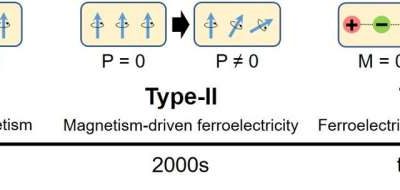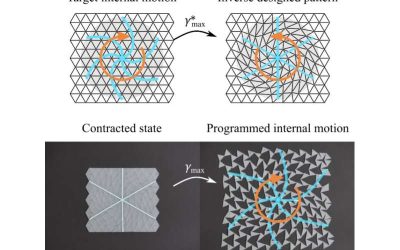Multiferroics are materials that exhibit more than one ferroic property, typically ferroelectricity (i.e., a spontaneous electric polarization that can be reversed by electric fields) and ferromagnetism (i.e., the spontaneous magnetic ordering of electron spins)....
PHYS.ORG
General framework bridges quantum thermodynamics and non-Markovianity
The extraction of work (i.e., usable energy) from quantum processes is a key focus of quantum thermodynamics research, which explores the application of thermodynamics laws to quantum systems. Meanwhile, other quantum physics research has been investigating the...
A new type of X-point radiator that prevents tokamaks from overheating
Nuclear fusion reactors are highly powerful technologies that can generate energy by fusing (i.e., joining) two light atomic nuclei to form a heavier nucleus. These fusion reactions release large amounts of energy, which can then be converted into electrical power...
Self-stirring nanoreactors enhance reaction efficiency for chemical synthesis
Recent technological advances have opened new possibilities for the efficient and sustainable synthesis of various valuable chemicals. Some of these advances rely on nanotechnologies, systems or techniques designed to design and study materials or devices at the...
A new method to generate muons with ultra-short high-intensity lasers
Muons are elementary particles that resemble electrons, but they are heavier and decay very rapidly (i.e., in just a few microseconds). Studying muons can help to test and refine the standard of particle physics, while also potentially unveiling new phenomena or...
Single-layer waveguide display uses achromatic metagratings for more compact augmented reality eyewear
Augmented reality (AR), the technology that overlays digital content onto what users see around them in real-time, is now widely used in the retail, gaming and entertainment industries, as well as in some educational settings and learning environments. A key component...
Superconducting diode bridge efficiently converts AC to DC for quantum circuits
Superconductivity is an advantageous property observed in some materials, which entails an electrical resistance of zero at extremely low temperatures. Superconductors, materials that exhibit this property, have proved to be highly promising for the development of...
Crystal-modifying agent piracetam provides scalable strategy for high-efficiency all-perovskite tandem solar cells
All-perovskite tandem solar cells (TSCs) are a class of solar cells comprised of two or more sub-cells that absorb light with different wavelengths, all of which are made of perovskites (i.e., materials with a characteristic crystal structure known to efficiently...
A new method to control the rovibrational ground state of a single molecular hydrogen ion
The precise measurement of states in atomic and molecular systems can help to validate fundamental physics theories and their predictions. Among the various platforms that can help to validate theoretical predictions are so-called diatomic molecular hydrogen ions...
Intuitive geometric method simplifies inverse design of kirigami
Kirigami is a traditional Japanese art form that entails cutting and folding paper to produce complex three-dimensional (3D) structures or objects. Over the past decades, this creative practice has also been applied in the context of physics, engineering, and...










